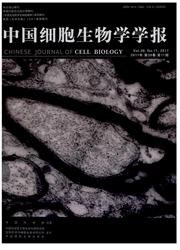

 中文摘要:
中文摘要:
变应性哮喘是一种以慢性气道炎症和气道高反应性为特征的异质性疾病,与白细胞介素-4(interleukin-4,IL-4)、IL-5和IL-13等II型辅助性T细胞(type 2 T helper cell,Th2)分泌的细胞因子有关。II型固有淋巴细胞(type 2 innate lymphoid cells,ILC2s)是在转录因子维甲酸相关孤核受体α(retinoic acid receptor related orphan receptorα,RORα)和GATA结合因子3(GATA-binding factor 3,GATA3)控制下由骨髓中的淋巴样祖细胞发育而来。ILC2s能分泌Th2型细胞因子如IL-5和IL-13,有助于启动和维持II型免疫反应。近期研究表明,ILC2s在变应性哮喘中发挥着不可替代的作用。研究ILC2s对于了解变应性哮喘的发病机制具有重要意义。该文将主要综述ILC2s的发现、发育、分布与功能及其与变应性哮喘关系的最新进展。
 英文摘要:
英文摘要:
Allergic asthma is a heterogeneous disease characterized by chronic airway inflammation and airway hyperreactivity, in which type 2 T helper cell(Th2) cytokines interleukin(IL)-4, IL-5, and IL-13 are closely associated with the symptoms. Type 2 innate lymphoid cells(ILC2s) arise, under the control of the transcription factors retinoic acid receptor related orphan receptor α(RORα) and GATA-binding factor 3(GATA3), from lymphoid progenitors in the bone marrow, to secrete Th2 cytokines including IL-5 and IL-13. ILC2 s contribute to the initiation as well as to the maintenance of the adaptive type 2 immune response. Recent researches demonstrate that ILC2 s play a key role in allergic asthma. The study of ILC2 s has great significance to understand the pathogenesis of allergic asthma. This review will describe the recent progress on identification, development, distribution and function of ILC2 s, and its relationship with allergic asthma.
 同期刊论文项目
同期刊论文项目
 同项目期刊论文
同项目期刊论文
 期刊信息
期刊信息
